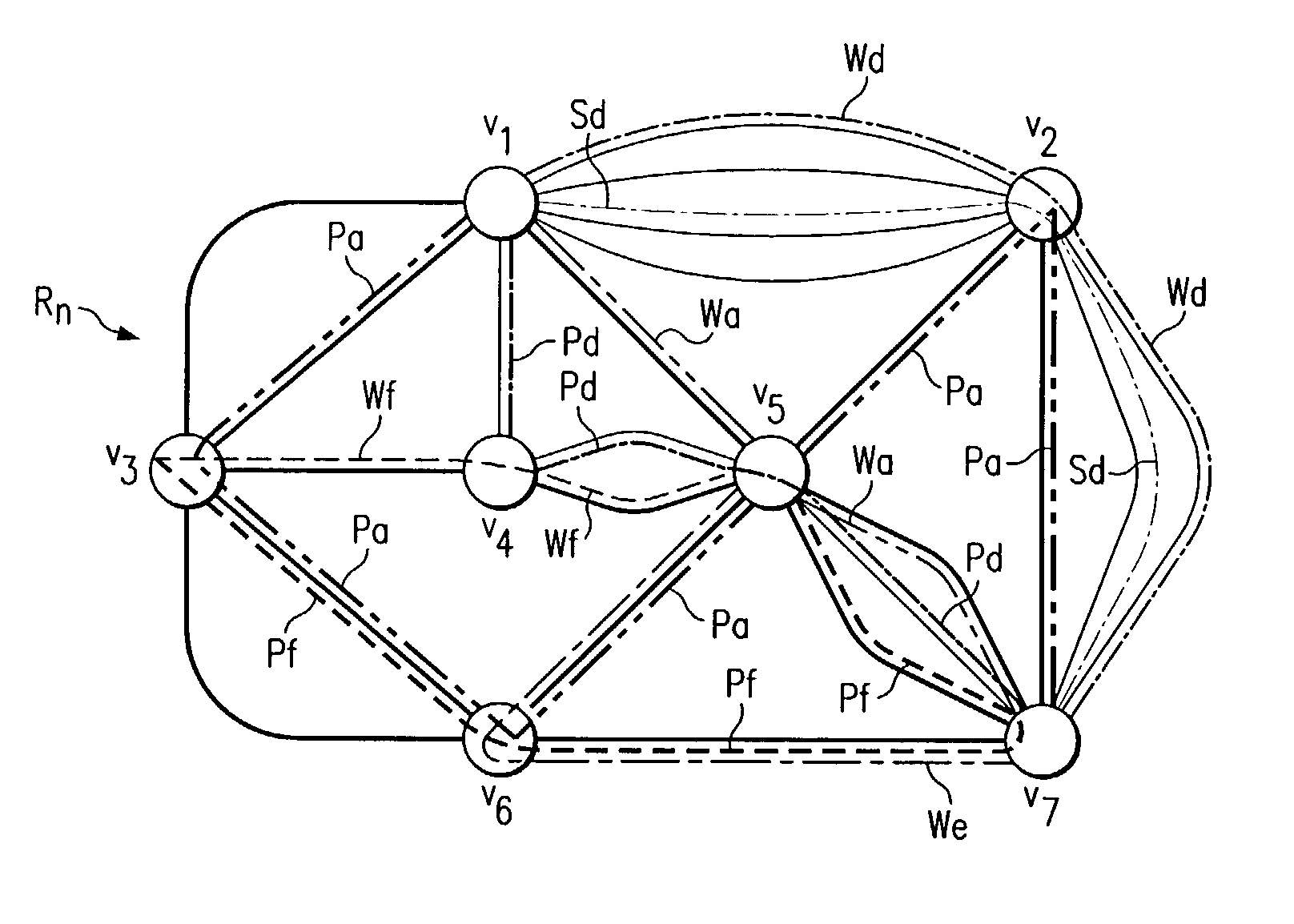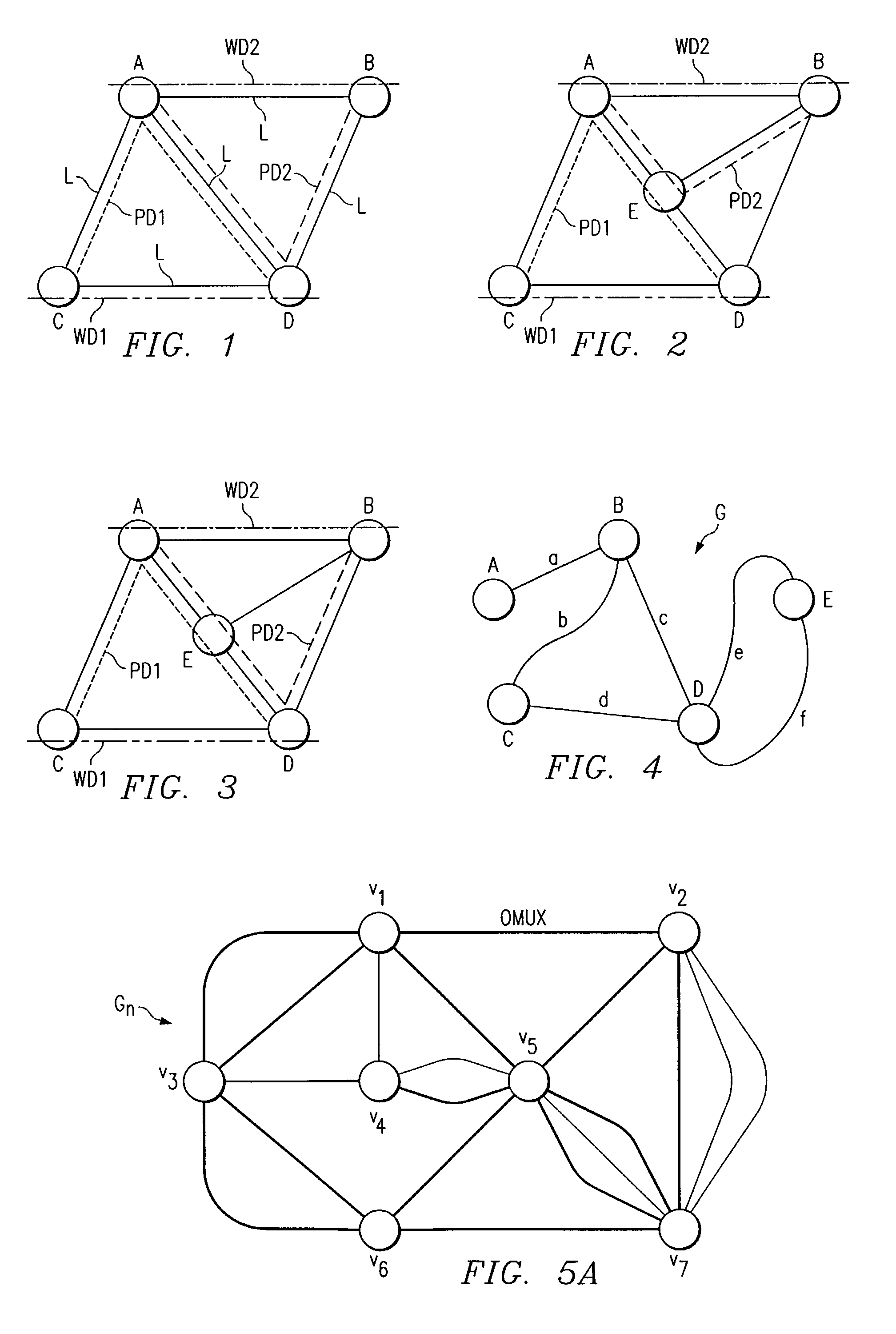Method for allocating protection bandwidth in a telecommunications mesh network
- Summary
- Abstract
- Description
- Claims
- Application Information
AI Technical Summary
Benefits of technology
Problems solved by technology
Method used
Image
Examples
Embodiment Construction
[0032]FIG. 3 is an example of an arbitrary mesh shared path-based protection telecommunications network 10. Telecommunications network includes a collection of geographically dispersed network elements, called nodes ABCDE, connected by communication links e (e.g., fiber, wireless links). The topology of the telecommunications network 10 may be represented by an undirected graph G. In operation, successive requests are made for a bi-directional demand D1 to be routed between two nodes C and D and a bi-directional demand D2 to be routed between nodes A and B in graph G. After a request is received, two interior-disjoint paths need to be allocated for each demand: a working path WD1 / WD2 and a protection path PD1 / PD2. The purpose of protection path PD1 and PD2 is to route the requested demand in case of a single network failure in working path WD1 or WD2. Working paths WD1 and WD2 need to allocate dedicated bandwidth while protection paths PD1 and PD2 do not, i.e., it can be shared amon...
PUM
 Login to View More
Login to View More Abstract
Description
Claims
Application Information
 Login to View More
Login to View More - R&D
- Intellectual Property
- Life Sciences
- Materials
- Tech Scout
- Unparalleled Data Quality
- Higher Quality Content
- 60% Fewer Hallucinations
Browse by: Latest US Patents, China's latest patents, Technical Efficacy Thesaurus, Application Domain, Technology Topic, Popular Technical Reports.
© 2025 PatSnap. All rights reserved.Legal|Privacy policy|Modern Slavery Act Transparency Statement|Sitemap|About US| Contact US: help@patsnap.com



